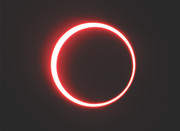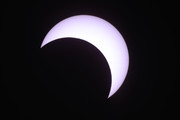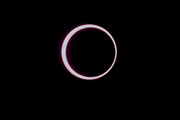What is the correct color temperature to use when photographing the eclipse ? Daylight is 6000K but I suspect when photographing the Sun it is higher.
On my DSLR with solar filter (Hoya NSI ) the sun was white. Moon was black. Like a monochrome.
Others have photographed the eclipse as yellow orange and red. They are probably using a different filter and exposure.
The color depends on whether you want to show how it looks from space or from Earth.
As seen in space, it’s white.
From Earth, our atmosphere causes some color changes. Only when the Sun is low in altitude will we see the color metamorphosis from white to varying tints of yellow. Tints of orange can happen if particle counts (dust, pollens, aerosol, etc.) are higher than normal. Red is possible when massive forest fires have flooded the skies with smoke.
So, unless the eclipse occurs near the horizon — the western horizon is far more likely to yield color changes — white is the “true” color for the Sun.
But, in case you haven’t noticed (ha!), most images of the Sun are anything but its natural color. Yet plain white can get boring.
As for color temp., my camera uses 5000K. To attempt a fiery color used in my prior pos (#2), I had to shift to something like 15,000K, using a software editor.






